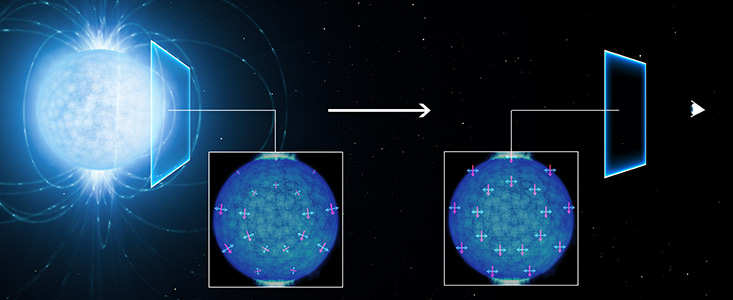An extraordinarily dense and strongly magnetized neutron star from a distant part of the cosmos is helping out scientists studying the properties of empty space. The light emitted by the star could potentially lead to the confirmation of an 80-year-old famous prediction regarding a strange quantum effect known as “vacuum birefringence”.
The study on the neutron star is being conducted by Roberto Mignani from INAF Milan, Italy, and his team. Their observation thus far has revealed a lot of key details about vacuum birefringence occurring in the empty space around the neutron star RX J1856.5-3754, located approximately 400 light years from Earth.

Neutron stars are essentially the unfathomably dense remnant cores of a massive star — usually several times more massive than our Sun — that exploded as supernovae at the end of their relatively shorter life spans. In addition to being extremely dense, neutron stars also have extreme magnetic fields that can be several billion times stronger than that of the Sun. In fact, such is the intensity of their magnetic fields that they permeate their outer surface and relatively vast distances across the surroundings.
Because of this powerful magnetic field, a neutron star can also affect the properties of the empty surrounding it. This is where a weird theory from quantum physics kicks in. Contrary to the popular belief that vacuum or empty space is basically completely empty and light can travel through it without undergoing any changes, the quantum electrodynamics(QED) suggests that empty space is full of virtual particles coming and going out of existence all the time.
Due to this weird property of empty space, an intense magnetic field such as one emanating from a neutron star can modify the surrounding vacuum so it exerts own influence on the polarisation of passing photons (read: light).
“According to QED, a highly magnetised vacuum behaves as a prism for the propagation of light, an effect known as vacuum birefringence,” Mignani explains, as reported by the European Southern Observatory.
QED made many predictions decades back among which vacuum birefringence has so far lacked any direct experimental verification in the more than 80 years since it was first proposed by Werner Heisenberg and Hans Heinrich Euler.
